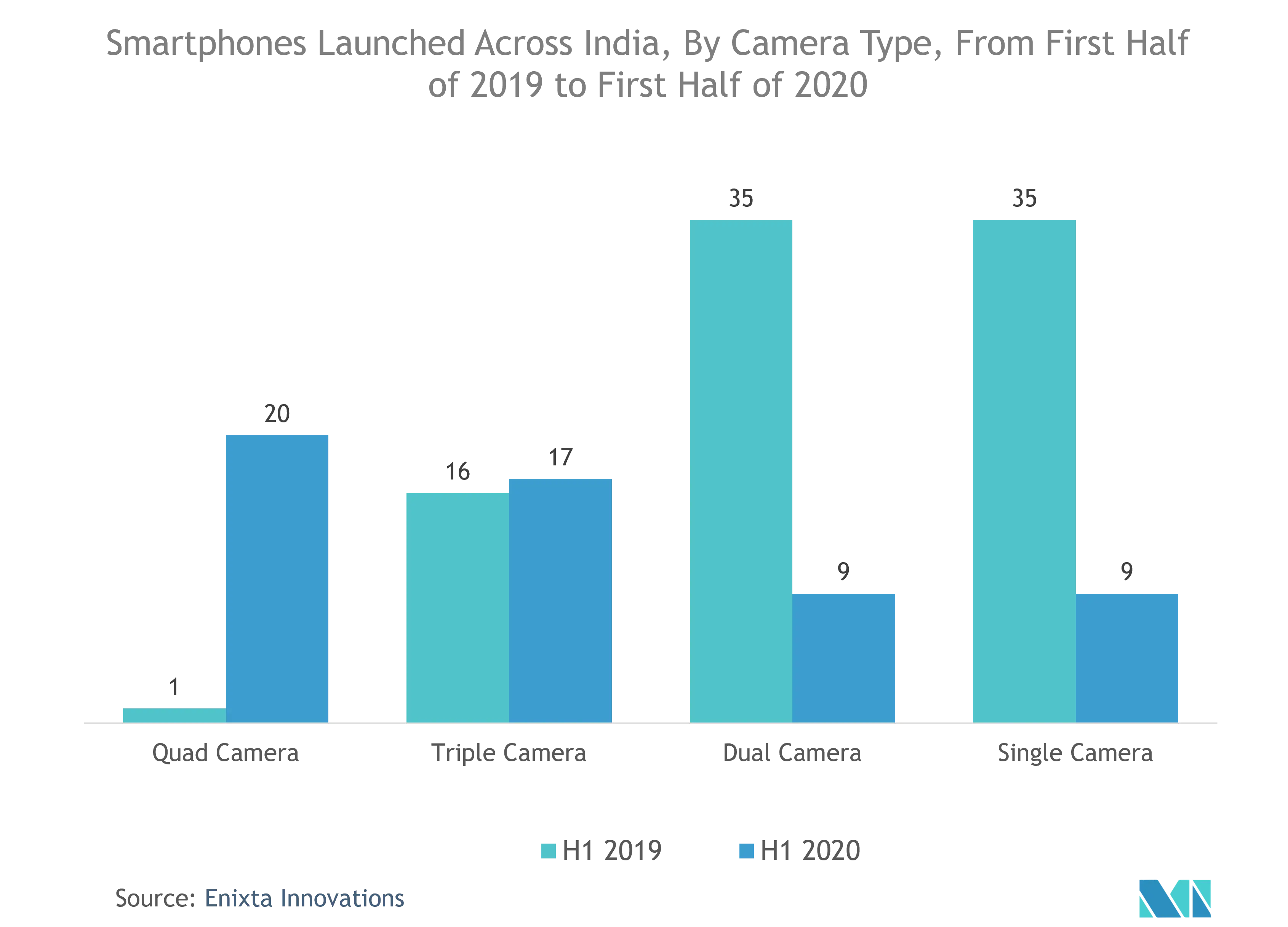Market Trends of Asia Pacific Smartphone Camera Module Industry
This section covers the major market trends shaping the APAC Smartphone Camera Module Market according to our research experts:
Introduction of Advanced Camera Technologies is Expected to Drive the Market
- Consumer demands have evolved in tandem with the evolution of phones. This has pushed for technological advancement and research, resulting in developments such as artificial intelligence, ultra-fast charging, bezel-less displays, and motorized cameras, etc.
- The progress of the smartphone camera did not stop at increasing the number of cameras or the megapixel count. Smartphone manufacturers continue to innovate, introducing a periscope-based system as the most recent example of breakthrough technology in this field. It enables a smartphone camera to provide a sophisticated 10x optical zoom with motorized internal optics without sacrificing image quality. Innovations like these will be the differentiating element for consumers' purchase considerations in the following years. For instance the Oppo Find X2 Pro in 2020, the Samsung Galaxy S20 Ultra, and the Realme X3 SuperZoom all included periscope zoom. It remains a popular feature, with Samsung rearranging the cameras in the S21 Ultra for 2021 to include two zooms, one periscope and one conventional, in an effort to improve zoom quality.
- Along with advancements in camera sensors, the demand for the integration of a dedicated image signal processor in smartphones is growing. In terms of image quality and helpful functionality, this has opened up a world of possibilities in smartphone camera technology. Dedicated image signal processors aren't simply for high-speed picture processing, contrary to popular opinion. It improves image quality, reduces noise, and enhances features such as HDR, auto exposure, autofocus, and auto white balance, among others.
- For instance, Qualcomm's new Snapdragon platforms with the Spectra 580 CV-ISP feature triple image signal processors (Triple ISP) capable of processing 2.7 gigapixels per second, allowing devices to use up to three separate cameras at the same time. This functionality opens up several intriguing possibilities, including seamless zooming between three different cameras, triple simultaneous image captures (each up to 28MP), multi-capture HDR composites, and even putting front-facing video footage atop rear-facing video footage, to name a few. On Qualcomm's Triple ISP-enabled devices, the customers may even capture up to three 4K HDR films at the same time.
- The function of smartphones cameras is evolving. The initial surge came as more people began to use smartphones to take photos rather than investing in professional cameras. The next boost will be built around developments in video capturing capabilities, given the prevalence of social media platforms and video content.

China to Hold a Major Market Share
- The boom of smartphone market has been one of the notable trends in China. This incraese in demand has been a result of various factors including rising disposable income, cheaper internet, innovations and advancements in technology. For example, the introduction of the mirror or prism in the smartphone camera module, which lies in the centre of the lens to reflect light in a folding zoom camera mechanism. It operates similarly to periscope technology, but instead of using the phone's thickness and camera bump for the increased zoom capability, it allows the camera to leverage the phone's length and width.
- For Instance, several smartphone manufacturers, like Huawei and OPPO, have already used this technology in their flagship models. Huawei's Huawei Mate XS is equipped with a folding zoom module.
- In May 2021, Xiaomi, a Chinese smartphone manufacturer, has patented a smartphone design with an under-screen flip camera that can function as both a primary and a selfie camera. The phone's camera system will feature flip technology, which will allow the camera to spin 180 degrees and act as both a selfie and a rear-facing camera. However, as evidenced by a new patent obtained by the World Intellectual Property Organization, the company is making significant progress in the development of a rotating under-display camera module.
- In August 2021, A Chinese smartphone manufacturer, Vivo has received a patent from the World Intellectual Property Organization (WIPO) for an innovative design that features a smartphone with a removable under-display selfie camera module. The smartphone maker's patent, according to GizmoChina, describes an in-display camera module that can remove from the handset's body.
- Despite dedicated tele lenses being the standard on high-end smartphones these days, smartphone zoom capability has improved substantially in the last couple of years, but it still trails behind traditional cameras. O-Film, a Chinese camera module manufacturer, has demonstrated a smartphone lens with an 85-170mm (35mm equivalent) optical zoom range. In principle, this should deliver better image quality throughout the zoom range than existing models.


